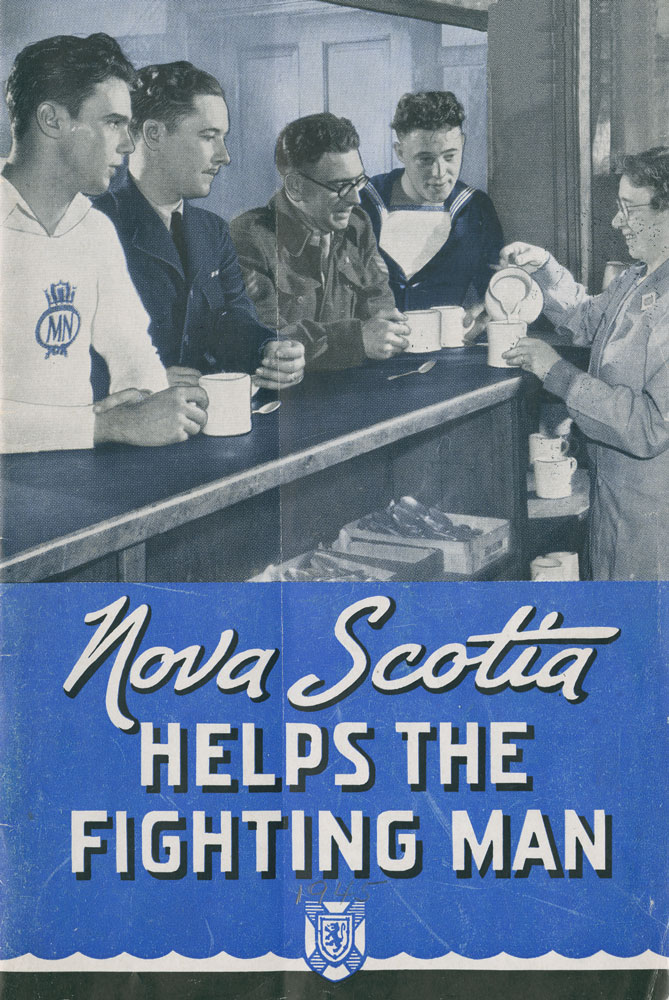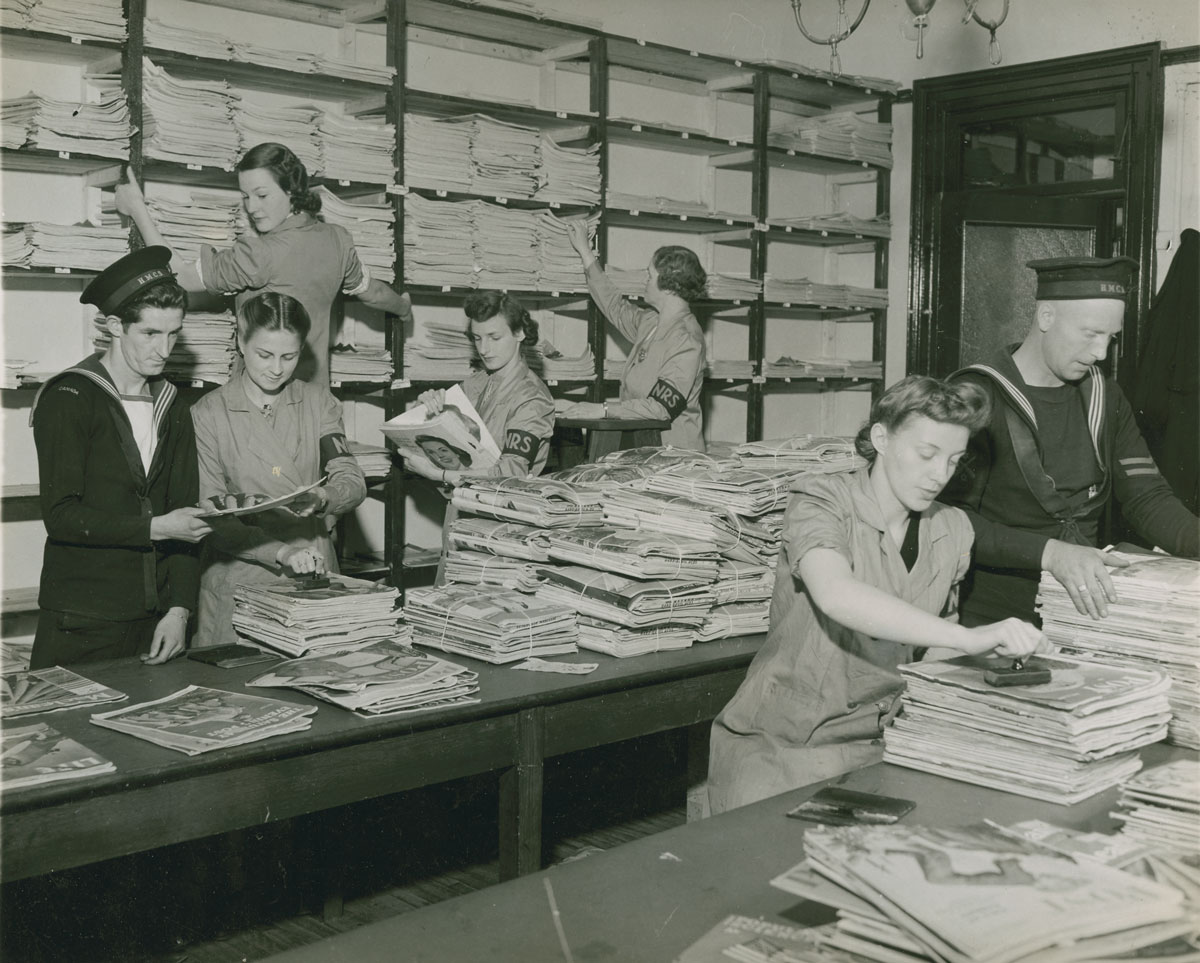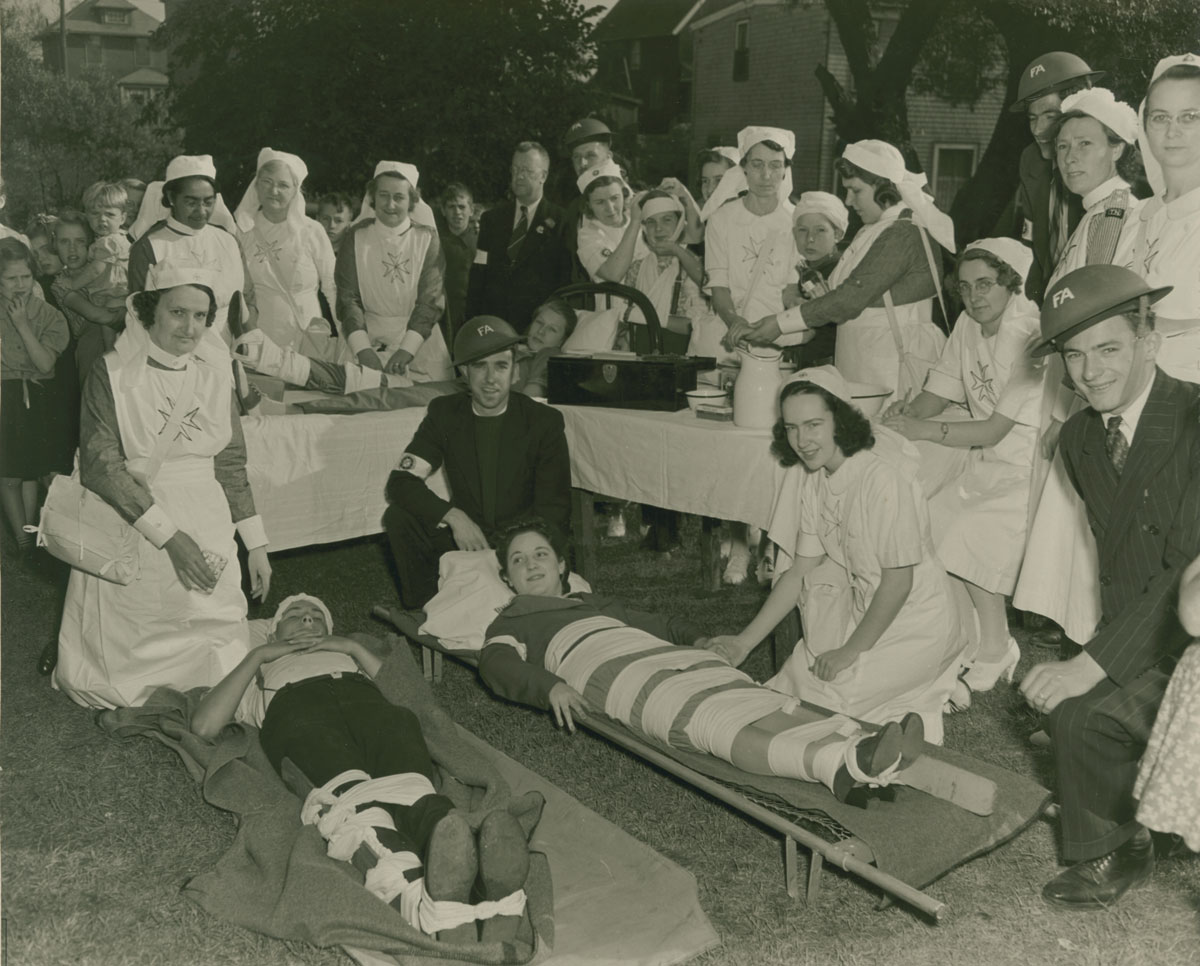The Untold Story
Women Volunteers
“I was home cooking carrots because my mother was off winning the war.”

Cover of Magazine, Nova Scotia Helps The Fighting Man, 1945
That quote from a young girl at the time of the Second World War sums up the tremendous volunteer effort made by women during the war. That girl’s mother initiated and ran the Central Magazine Exchange.
In 1939, Halifax was a city of about 78,000 people. It had seen better days as an imperial outpost and garrison city. It struggled through the Dirty Thirties and was ill prepared for the influx of thousands and thousands of transient sailors, soldiers and airmen and, often, their families. In just over five years, the population would grow to 117,000, straining every resource and creating a shortage of housing and diversions for the troops, who were often bored while waiting for active duty. The people of Nova Scotia and Halifax made an outstanding response of volunteerism, with the majority of women being volunteers.

Sorting Magazines E.A. Bollinger, 1941 The Nova Scotia Archives
The sheer number of volunteers, who helped during the war years, can only be guessed at because the federal government did not set up an index of wartime charities until 1941. But the numbers were HUGE. Women joined national organizations such as the Red Cross, the IODE, the Salvation Army, and the St. John Ambulance. In the Halifax/Dartmouth/Bedford area alone there were 18 separate branches of the IODE.
Local women also formed and launched groups such as the North End Services’ Canteen, the Halifax Central Magazine Exchange and the ANA Club. The hand of friendship was extended to thousands by churches and clubs offering hot meals and entertainment.
Women also formed groups to knit what were called “comforts” for sailors and merchant seamen, and for people in England, who were dealing with the German bombings. The women volunteers made quilts, clothing and bandages, collected salvage, helped organize blood donor clinics and encouraged people to buy war bonds.
A few statistics will give some perspective to the volunteer effort:
- The North End Servicemen’s Canteen served 400,000 hot meals in a two-year period.
- The Halifax Central Magazine Exchange distributed 4 million magazines and 30,000 packs of cards by June 1942 for troop and merchant ships in the harbour to alleviate some of the boredom and stress.
- There were 13 nursing divisions of the St. John Ambulance brigade in Halifax alone. The women’s volunteer brigades contributed more than 200,000 hours of nursing aid.
Knitting and sewing for overseas relief also was undertaken by women volunteers. The output was astounding. These figures are for the year 1945 alone:
- Knitted comforts for men overseas (mittens, scarves, etc.) 42,282
- Surgical dressings 33,263
- Quilts for civilian relief 4,664

Members of the Halifax North (Women’s) Division of the St. John Ambulance Brigade Association in a practice at their headquarters on West Young Street. Halifax Civil Emergency Corps, September 1942. The Nova Scotia Archives.
This is a glimpse of the world of women volunteers in war time.
While much of the research will focus on Halifax because of its strategic position, volunteerism occurred across the country. Having a public monument celebrating women’s wartime contributions on the very well travelled walkway along the Halifax waterfront will be of more than regional significance.
It will resonate nationally and also provide international visitors with a view into the exceptional volunteer work that Canadians carried out. Canada and Nova Scotia, in particular, has a tradition of volunteerism that far exceeds most countries in the world. The Volunteers/Les Bénévoles honors that tradition.
